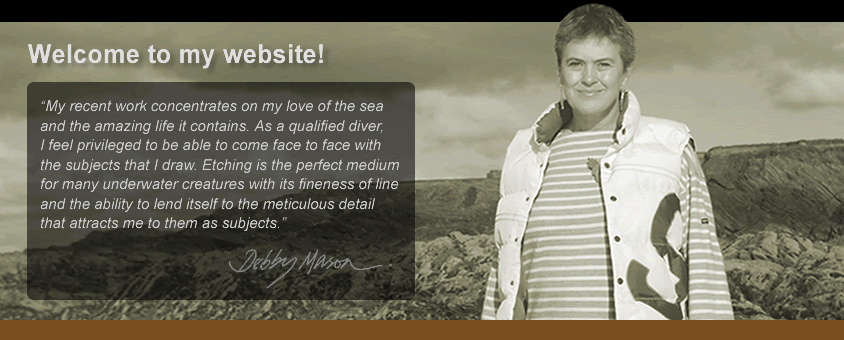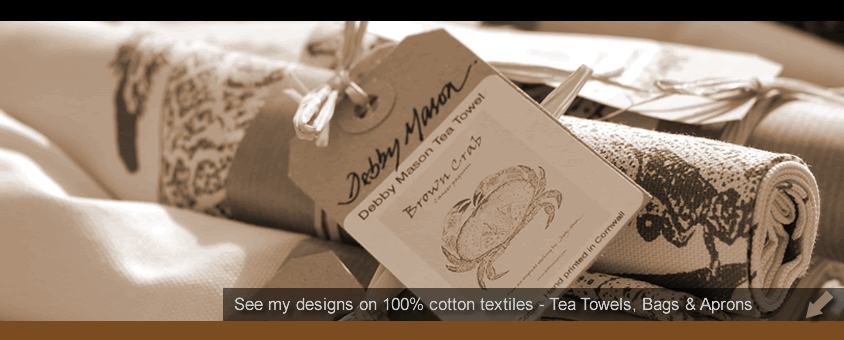
- Amphibians
- Birds
- Cephalopods
- Cetaceans
- Coral Seas
- Crustaceans
- Fresh Water Fish
- Insects
- Jellyfish
- Mammals
- Molluscs
- My Designs
- Plankton
- Reptiles
- Salt Water Fish (UK)
- Sea Dragons
- Sea Horses
- The Twilight Zone

Newsletter
To keep track of my new work, exhibitions and what I am up to then simply enter your email here and my friendly penguin will update you with my latest news! Thank you
- Exhibitions
- 2011
- Society of Wildlife Artists Exhibition, Mall Galleries, London
- SAHFOS - Plankton 2011
- The Royal Academy Summer Exhibition
- 2009
- The Royal Academy Summer Exhibition
- 2009/8
- Commission from the Isle of Man Government for fish pictures for an educational poster
- 2008
- Illustrations for 'The Game Cook' cookbook by Norman Tebbit
- 2007
- The Royal Academy Summer Exhibition
- Dartmouth: Higher Street Gallery
- 'The Deep' in Hull
- 2007/6
- L'Oceanografic in Valencia
- 2002
- Aquarium Finisterrae in La Coruna, Spain
"I feel most strongly that we constantly take and profit from the sea and put very little of any good back in to it"
The sale of my work helps support the following projects & organisations:
News & Events

My Designs

Bone China Mugs
5 Original Debby Mason designs: Mackerel, Penguin, Argonaut, Seahorse and Coelacanth

Cotton Tea Towels
12 Original Debby Mason designs: Sea Dragon, Sea Horses, Blue Crab, Mackerel, John Dory, Flying Fish, Argonaut, Coelacanth, Brown Crab, Hare, Pheasant & Armadillo

The Game Cook - Cookbook
The Game Cookbook by 'The' Norman Tebbit - Illustrated by Debby Mason
'Excellent book, recipes were good also enjoyed the comments made by Norman Tebbit. Would make an excellent Christmas present for someone who enjoys game'














